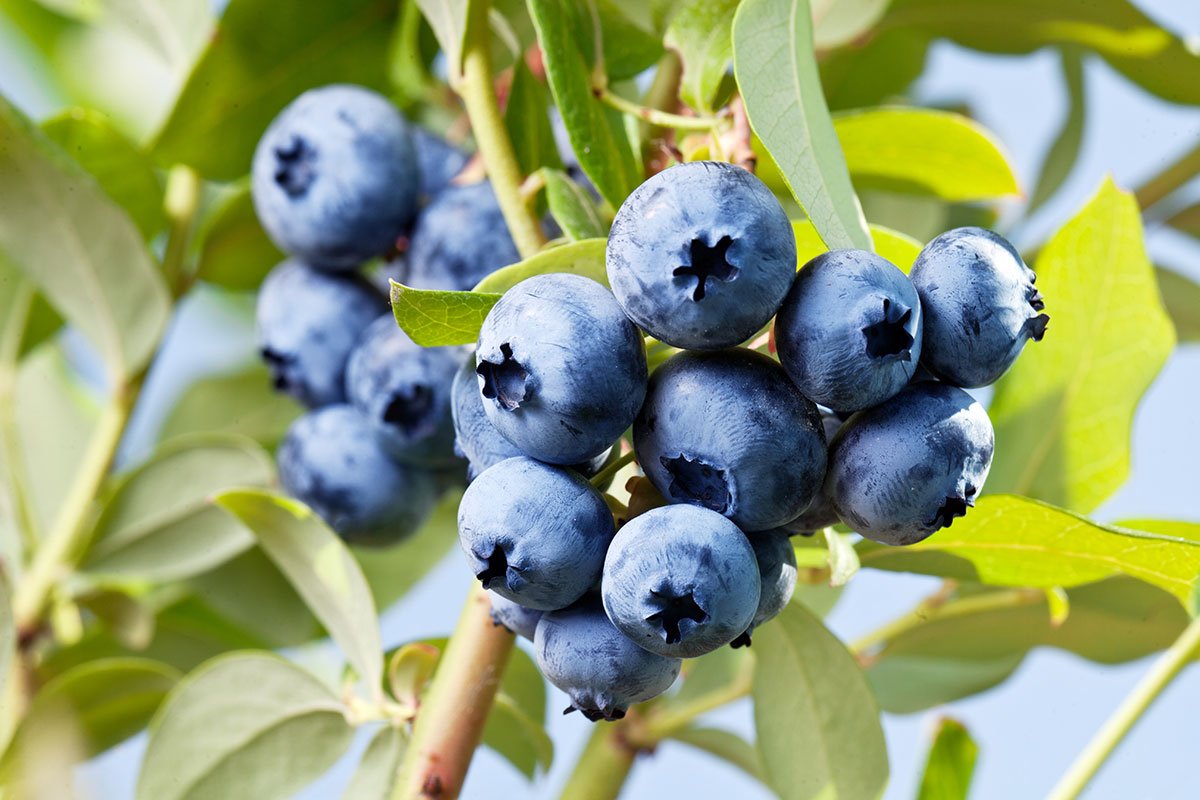BLUEBERRIES ARE OFTEN LABELED A SUPERFOOD – FOR GOOD REASON!
I am a nut when it comes to blueberries. I LOVE BLUEBERRIES!! I eat blueberries every morning mixed with my oatmeal and have been for years. And, I love buying fresh, locally grown blueberries that are available at our farmers’ market.
Blueberries are labeled a superfood because the deep blue color comes from anthocyanin, an antioxidant that can help protect the body from heart disease and cancer, reduce inflammation, and increase immune function. More scientific research also suggests that compounds found in blueberries may boost brain health, lower blood sugar levels, and improve insulin sensitivity.
Growing your own blueberries is easy. Blueberries grow best in well-drained soil that is well amended with organic matter and/or compost. If you are thinking of wanting to grow some blueberries but you tell yourself, “I don’t have anywhere to plant blueberries”—not so fast! Blueberries can make great and attractive foundation plants in your existing landscape around your house or property. This is what I did. The blueberry plant has nice green growth in the spring that is followed by small white flowers in the spring. These flowers then produce the fruit. Blueberries have beautiful fall leaf color before going dormant for the winter. Bottom line—I find blueberries to be an attractive addition to any landscape. And, the benefits are enormous with the fresh fruit that you produce.
Let’s learn a little more about blueberries so that you make the best personal choice for your landscape. There are four types of blueberry plants: Southern Highbush, Northern Highbush, Rabbiteye, and Lowbush.
SOUTHERN HIGHBUSH
Southern Highbush is the result of an extensive breeding program at NC State. They will fruit earlier than others. One of the best varieties of Southern Highbush is O’Neal. O’Neal is self-pollinating and can grow to be 5 feet tall. It is very hardy from zones 5 through 9.
NORTHERN HIGHBUSH
Northern Highbush varieties are probably the most popular to grow in Central Virginia. Very hardy between zones 3 to 7. They can grow up to 5/6 feet tall while producing large crops of fruit. Some of the more popular varieties of Northern Highbush are Bluejay, Blueray, Bluecrop, and Jersey. Keep in mind the idea to plant two different varieties in order to get more fruit yield.
RABBITEYE
Rabbiteye varieties tend to be the hardiest in Virginia, producing high yield of fruit. Rabbiteye varieties are vigorous, hardy, and native. Being native they require less care and soil adaptation. Popular varieties include Climax, Premiere, Tift blue, Delite, and Pink Lemonade. As with all blueberries, they produce much more fruit with a second variety to cross pollinate.
LOWBUSH
Lowbush varieties have a more dense growing habit with most only growing no more than 4 feet high. They do produce a large crop of fruit. Patriot seems to be the go to variety. Other varieties include Bluehaven, Elliott, and Friendship.
PLANTING BLUEBERRIES THIS FALL
The fall planting season will soon be here and fall is the absolute best time to plant. And, as a reminder, make room to plant at least two different varieties for cross-pollination to occur. This will bring you the best yield of berries.
When planting be sure to add some ESPOMA BIO-TONE as a root stimulator. Then when spring growth appears fertilize with ESPOMA HOLLY TONE. Then feed a second time with Holly Tone in June.
In essence you are developing an EDIBLE LANDSCAPE. What is Edible Landscaping? Edible landscaping replaces plants that are merely ornamental with food producing plants, allowing you to create a multi-functional landscape providing returns on your investment of water, fertilizer, and time.
Another point to be aware of—when the fruit turns plump and deep blue be prepared to lose a few to the birds that visit the plants. Birds do love fresh blueberries as much as humans. You can protect the plants with bird netting if you choose.
PLANT A LITTLE HAPPINESS!!!!!!!!!


Thank you for the very informative article on the benefits of growing blueberries!
Lilia B. Dubynin
Lilla,
Good Morning.
Thank you for taking the time to share your thought on my blueberry article. It’s fun writing these blogs. Take care, Doug